Blockchain Technology, History, Working, Applications, Advantages
Hello guys, welcome back to our blog. In this article, we will discuss what is a blockchain, the working of blockchain, its history, applications, advantages, disadvantages, and the language used for blockchain.
If you have any electrical, electronics, and computer science doubts, then ask questions. You can also catch me on Instagram – CS Electrical & Electronics.
Also, read:
- Top 14 Back-End Frameworks For Web And App Developers In 2022
- Top Linux Commands For Engineers, Useful Linux Commands Asked
- What Is NFT, Non-Fungible Tokens, Working, Applications, History
Blockchain Technology
Before that, we will see what is the motivation to learn blockchain. Well, guys, it’s salary and more jobs. There are more than 30,000 jobs on the blockchain.
- 2102 jobs for the 0-3 lakhs package.
- 9092 jobs for a 3-6 lakhs package.
- 12,704 jobs for a 6-10 lakhs package.
- 8314 jobs for a 10-15 lakhs package.
What is Blockchain?
It is the latest technology where the data is stored in verified, unchangeable, tamper-proof, and immutable ways. In today’s world, the internet is hackable and the tempering of data is possible, but these things can be avoided by using blockchain technology.
In the blockchain, once the data is stored it can not be changed again. Blockchain gives us only two options create and read, we can add new data into records and we can read the data.
In other words, blockchain is a technology that is growing rapidly that keeps a permanent record of all the transactions done by us in a secure and immutable way in a decentralized distribution network(which means data is stored in many systems).
Applications of blockchain
- It is used in Cryptocurrency (Bitcoin, Ethereum, altcoin, litecoin).
- Used in the smart contract (It is handled autonomously by the fulfillment of a contract without needing a third party).
- It is also used in digital voting.
- Government registration of land.
- Transportation and supply chain management.
- And in many places where data need to be stored permanently.
What was the actual problem due to which blockchain was introduced?
In 2008, the international banking crisis happened because the banks were giving credit to the public by not checking their cibil score and after that people were not able the repay the amount to the banks which cause bank crises.
After this, on 13th October 2008, Satoshi Nakamoto published the paper “Bitcoin: A Peer-to-Peer Electronic Cash System” and no one knows who is Satoshi Nakamoto whether is a person, or a group. After this, blockchain technology was introduced where the data of transactions can be stored without changing it. This technology helped banks to check and verify all transactions made by the public.
How does blockchain work?
Blockchain offers only two options one is adding and reading. The data is stored in a database in the decentralized distribution network. Suppose, you have 1000 customer details and want to store data in a database using blockchain, all these data will not be stored in individual SQL databases, instead, the database is broken into 100 records means 10 databases with 100 records each as shown in below image.
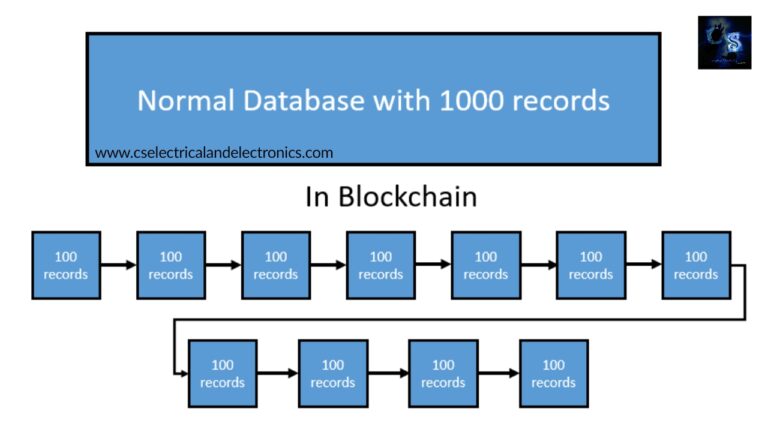
Now, you can see in the above image the 1000 customer details are stored in 10 databases or blocks with 100 records each. Now, let’s see what all things block 01, 02, and soon on contain. Once the data is stored, each block generates a unique fingerprint. We can generate unique fingerprints of data using SHA 256.
What block contains?
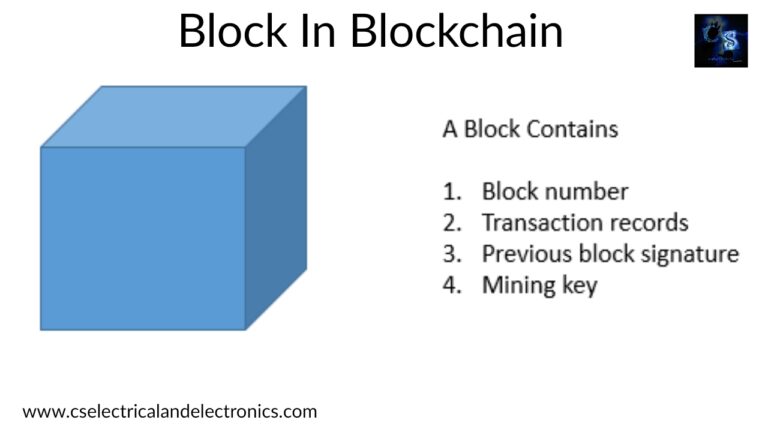
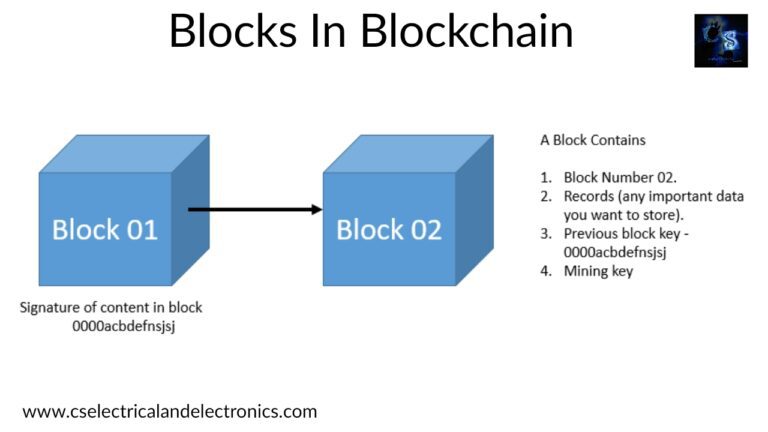
Each block is connected with the previous block key. The Key is generated once the data is stored in the block. Suppose you have stored some data in block 01 and the key generated is 000chkjdshakhdkjh, if the data in block 01 is changed then the key also gets changed.
The data is not stored in only one system it is stored in many systems. Suppose in one system the data gets changed, then you can compare the key of that block with other systems with the same block. Let’s understand with the help of a diagram.
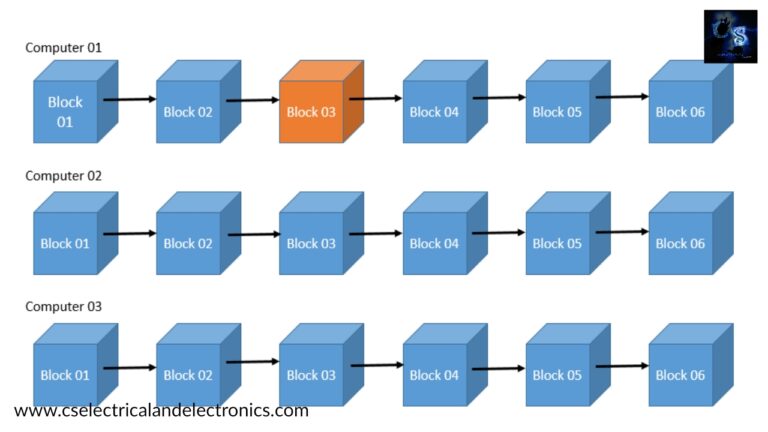
Mainly blockchain is used to store data permanently and in blockchain, the data is not stored in an individual database instead of this the database is broken and stored in a different database or block, assume a total of 1000 customer data is there, then the 100 customer data is stored in one block, another 100 data is stored in next block and so on. The data is not only stored in one computer, it is stored in many computers. Now, let’s discuss the actual work.
Once the data is stored, the unique fingerprint(key) is generated, and this key is then passed to the second block. The second block has the previous key, its own data, and the block 02 key. Then block 02 key is passed to block 03, block 03 has the previous block 02 key, its own data, and a new key is generated. Like this, all blocks are connected with a unique fingerprint(key).
Suppose the data gets changed in block 03, the key also gets changed and it will also affect the remaining blocks. Later, the system will compare the key with other computers’ block 03 key, if the key is changed, the system recovers data from other computers. In blockchain data is stored in many computers so there is no risk if the data get changed, it can be recovered very easily.
Let’s understand with the help of one more diagram.
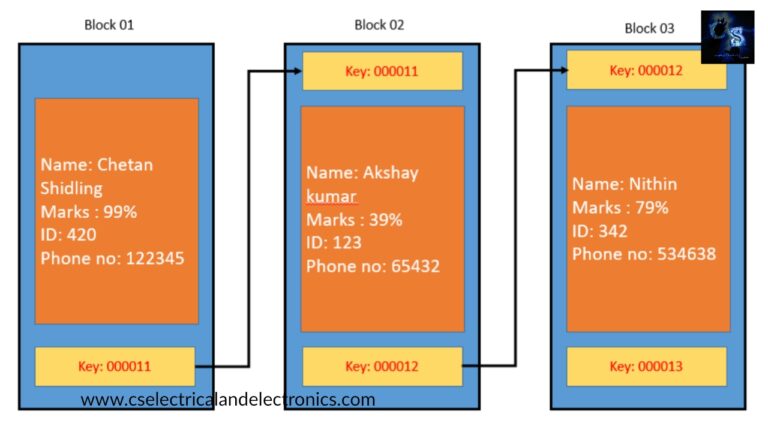
As you can see above image, the student information is stored, once the data is stored a unique fingerprint(key) is generated 000011, and this key is passed to the next block, block 02 has a previous key, its own data, and new key 000012, and the same process goes on.
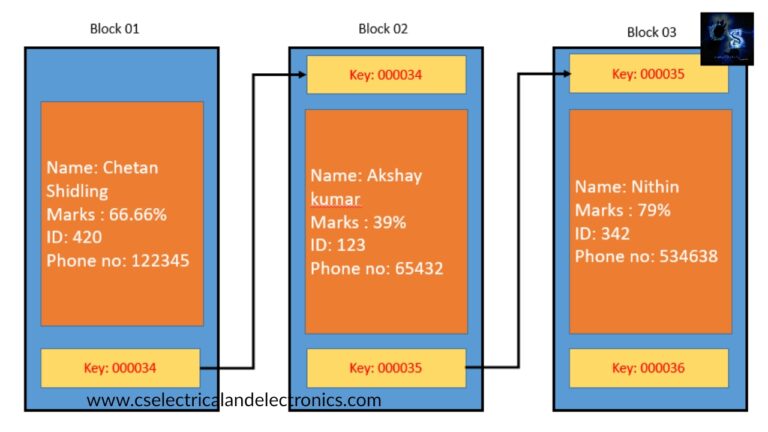
When someone changes the data in any block, consider block 01 in the above image, the student marks or percentage is changed, and now the key will also change, then the remaining block’s key also gets changed.
As I discussed earlier, the data is stored in many computers, if one computer block key is changed, the system will compare the key with another computer block key, if the key does not match, the computer will recover the data from another computer block.
This is how blockchain works. This is basically the working of blockchain.
Which language is used for blockchain?
The solidity language is used for blockchain, it is an object-oriented programming language that is used for writing smart contracts. It is still in the development phase. It is a statically typed language and supports inheritance. The solidity code can be executed in remix IDE or visual studio code.
Types of Blockchain
The types of blockchains are:
- Public blockchain – Ethereum, Bitcoin.
- Private blockchain – R3 Corda.
- Consortium blockchain – Multi Chain, Hyperledger.
01. Public blockchain: It is not governed by any industry or anyone, it is been stored and maintained by individuals.
02. Private blockchain: It is governed by a private company. It costs more than public blockchain, but if the required resources are there we can do it.
03. Consortium/Hybrid blockchain: It is governed by a group of private stakeholders or organizations. It is a kind of shared resource which is hosted by all the stakeholders, and they all store the data in it.
Advantages of blockchain
- Data is safe or secure.
- Once the data is stored it can not be deleted.
- Data is stored in many systems.
Disadvantages of blockchain
- High utility of electricity.
- Mining is costly (I did not mention mining in this article)
- Resources used are more and more than required in the traditional way.
This was about blockchain. I hope this article may help you all a lot. Thank you for reading.
Also, read:
- Cybersecurity Trends And Challenges In The Digital Age
- Natural Language Processing (NLP) In Computer Science
- Data Science In Action: Real-World Applications
- Software Testing Strategies: Ensuring Quality In Development
- The Evolution of Programming Languages
- Mobile App Development Trends In 2024
- Trends In Frontend Development: Frameworks And Libraries
- Continuous Integration And Continuous Deployment (CI/CD) Pipelines
Author Profile
- Chetu
- Interest's ~ Engineering | Entrepreneurship | Politics | History | Travelling | Content Writing | Technology | Cooking
Latest entries
 All PostsApril 19, 2024What Is Vector CANoe Tool, Why It Is Used In The Automotive Industry
All PostsApril 19, 2024What Is Vector CANoe Tool, Why It Is Used In The Automotive Industry All PostsApril 13, 2024What Is TCM, Transmission Control Module, Working, Purpose,
All PostsApril 13, 2024What Is TCM, Transmission Control Module, Working, Purpose, All PostsApril 12, 2024Top 100 HiL hardware in loop Interview Questions With Answers For Engineers
All PostsApril 12, 2024Top 100 HiL hardware in loop Interview Questions With Answers For Engineers All PostsMarch 22, 2024Driver Monitoring Systems In Vehicles, Working, Driver Sleepy Alert
All PostsMarch 22, 2024Driver Monitoring Systems In Vehicles, Working, Driver Sleepy Alert








